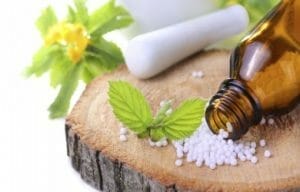
It has been over couple of centuries since Dr. Hahnemann found the system of homoeopathy. Many pioneers have written many books related to his works and also individual works on this system. We have multitude of books based on homoeopathy written by many esteemed authors other than the stalwarts.
The main soul of homoeopathy is its principle, and related philosophies. Hahnemann had written Organon in the year 1810 and subsequently his Materia Medica Pura and other materia medica(s) by respective authors were written in different period of time.
If we consider the lifestyle, culture, economic situations, modernisation, development, environmental changes, especially pollution and the resulting genetic variations and mutations, etc., there are so many things that affect the individual very diversely, not only humans but the entire ecosystem.
So the question arises as to whether there is a possibility of existence of pure constitution as those existed in Hahnemannian era. Most of today’s are mixed constitution and doubt arises that the same laws and theories would still be applicable in this modern era.
This doesn’t mean doubting the efficiency and value of this system as it is the most effective and reliable system of medicine widely followed throughout the world. But what we really need is updating our syllabus regularly in par with the modern medicine. As for example if we take materia medica, there are causes like `abuse of mercury’ and ‘loss of vital fluids’ in so many drugs. In the same manner there is usage of old medical terminologies that have acquired new names. Such things when updated and modified could bring out easier understanding for today’s students and other readers. More over it helps the students to correlate the symptoms with other subjects such as practice of medicine, surgery, etc.
For example if we take Allen’s key notes, we can find terms such as plethora, lienteria, sapraemia, chlorosis, apoplexy, phthisis, etc. They have acquired and have been replaced by new names in the updated versions of many medical books. In olden days, according to older psychology, there were basically four temperaments as per which, they categorized the human beings namely sanguine, choleric, melancholic and phlegmatic. But such a classification has become insignificant and ineffective in modern times.
It is not necessary to change the entire literature, but just some modifications would be fine. For example in place of old terms we can include the new terminologies in brackets. And the pattern can also be modified to some extent. Since it is not a simple task as this is followed widely and require more research and more man power, government organisations can undertake them as projects and give authenticated results.
Despite all odds, homoeopathy has survived so many challenges and maintained its authenticity till date. It is a great victory for the people who have endured all the criticisms and faced such adversities. We should be grateful to their efforts, for without them we would not be having such a great art of healing.
As much as we have succeeded and sustained the changing trends of medical treatment, we should also be able to compete with the modern medicine. What we lack is or what is thought to be lacking in us (by commoners and other medical system) is the knowledge of modern treatment methods, diagnostic techniques, surgical procedures, parenteral administration, and the basic pharmacology. As much as we defend our system, we do have our own insecurities. If we must succeed as a physician in the present netizen era, we must keep on updating our knowledge on current trends in medicine. Now a days before consulting a doctor, the patients consult the internet, check out the symptoms, treatment choices, etc. Everything is now available for everyone in a single swipe. It is important to have a good knowledge of our system and it is always better to have a basic knowledge of other medical systems.
Change should be brought in the education system for an efficient outcome. Along with theoretical knowledge, such basic things should be included in the curriculum. If we are educated and equipped with such technology and techniques, there won’t be a need for hiring people of other system for homoeopathic projects. Except for pharmacology and surgical procedures, we have almost same syllabus in our bachelor degree. Steps can be taken by governing bodies to make this degree eligible for M.D in non clinical subjects like anatomy, physiology, etc. Otherwise a basic medical degree (such as Bachelor of Medicine) common to all, with allopathy and other AYUSH as optional subject or specialization may be established.
Hahnemann had good knowledge of different medical techniques, that prevailed in his era. That was why he was able to know the adverse effects of medicines and procedures such as mercurial preparations and blood letting, leeching, etc. Hence he efficiently catered homoeopathic medicine to counteract such ill effects. But that was centuries ago. Now a days we face so many drug induced diseases, but we are ignorant of the action of such medicines. It is not our fault as our system has some limitations and we have to abide by certain rules which are to be followed.
To overcome all these problems, we need a comprehensive medical education, where the systems coexist and complement each other to provide an efficient treatment aimed at true cure. For this to happen it may take years or decades.
But until then, instead of just blindly following the legacy that was left behind by our pioneers we need to update, improve, develop our system by introducing modern techniques in education and take up as many researches in various fields of homoeopathy.

Exactly! That’s what I want.. infact homeopathy wants…..